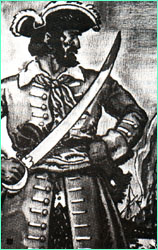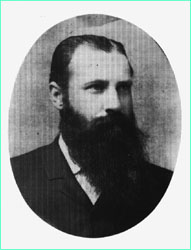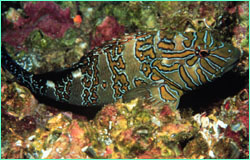 |
 |
 |
Part 2 (back to Part 1) Another treasure that supposedly still lies buried somewhere on the island is that of Benito "Bloody Sword" Bonito. Bonito terrorized the west coast of the Americas beginning about 1818, looting and burning Spanish galleons and taking his hoardings to Cocos Island. In his most infamous exploit, Bonito, learning that Spanish gold was transported by uniformed guard from the Mexican cordillera to Acapulco, simply captured the guard, put their uniforms on his own men, and loaded the treasure onto his ship—without firing a shot. His most infamous mistake was to let two Englishmen from a British ship he hijacked join his band of pirates. Years later, these two Brits were arrested by the authorities and sentenced to hang, but were released after leading their captors to Bonito's West Indian hideout, where this notoriously blood-thirsty pirate was finally cut down. The two Englishmen apparently never managed to return to Cocos, and the "captain's cut" of Bonito's cache sits there to this day. Its estimated modern value: $300 million. The most famous Cocos hoard of all is the "Great Treasure of Lima." In 1820, as the revolutionary José de San Martín advanced on Lima, the Spanish Viceroy realized he had better remove the stores of gold and silver under his command. Officials of the more than 50 Spanish churches in the city came to the same conclusion about their ecclesiastical riches, which included a solid-gold, gem-encrusted, life-size image of the Virgin Mary. Figuring that hiding this wealth anywhere near Lima would be foolish, the Viceroy entrusted it to a British sea captain named William Thompson, a known and respected trader in the region. The Viceroy's plan was to have Thompson sail around for several months, with the treasure stowed aboard his merchantman, the Mary Dear, until the political situation improved. Big mistake. A load of such value—at the time, Spanish officials deemed it worth between $12 and $60 million—proved too great a temptation to Thompson and his men. Once out of sight of land, they cut the throats of the Viceroy's appointed guard, tossed their bodies overboard, and made haste to Cocos, where they duly buried the treasure.
Peter Tyson is Online Producer of NOVA. Photos/Illustrations: (1,5,7) ©Michele Hall; (2-4,6) from La Isla del Coco by Christopher Weston. Cocos Island | Sharkmasters | World of Sharks | Dispatches E-mail | Resources | Site Map | Sharks Home Editor's Picks | Previous Sites | Join Us/E-mail | TV/Web Schedule | About NOVA Watch NOVAs online | Teachers | Site Map | Shop | Search | To Print PBS Online | NOVA Online | WGBH © | Updated June 2002 |
 Bonito 'Bloody Sword' Bonito.
Bonito 'Bloody Sword' Bonito.
 Classic Cocos jungle.
Classic Cocos jungle.
 August Gissler
August Gissler
 Giant hawkfish on a Cocos reef.
Giant hawkfish on a Cocos reef.